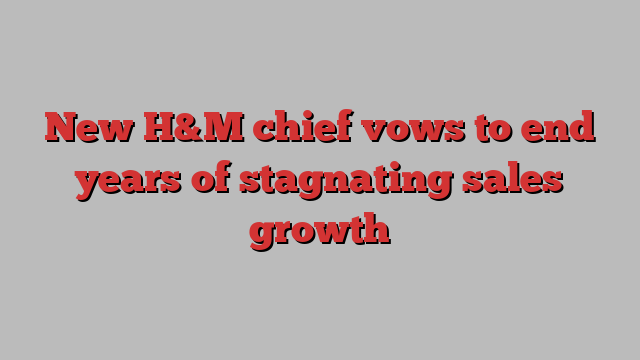
Unlock the Editor’s Digest for free
Roula Khalaf, Editor of the FT, selects her favourite stories in this weekly newsletter.
The new chief executive of H&M has signalled that the Swedish fashion retailer will seek to end years of stagnating sales growth at the same time as boosting profitability.
Shares in the world’s second-largest clothing retailer surged 13 per cent on Wednesday after it reported a bigger than expected rise in profitability and announced a new focus on revenue growth.
“It’s very important that we put full emphasis on driving sales growth,” Daniel Ervér, who took over as chief executive at the end of January, told the Financial Times.
H&M has been under pressure for years from both cheaper chains such as China’s Shein and more expensive competitors including Zara, which is part of Inditex, the world’s largest fashion group.
The Swedish company has responded to more than a decade of falling margins by focusing on profitability in recent months, targeting a 10 per cent operating profit margin this year. It last reached that level in 2017.
In H&M’s first set of quarterly results since Ervér took over, it reported an operating profit of SKr2.1bn in the three months to the end of February, compared with SKr725mn in the same period a year ago. Analysts had expected an average of SKr1.4bn.
H&M’s operating margin was 3.9 per cent in the first quarter, more than double what it was a year earlier.
Analysts were most impressed by a larger than expected increase in gross margin — a key measure of profitability for retailers — which reached 51.5 per cent, up from 47.2 per cent a year ago.
Net sales in the period were down 2 per cent to SKr5.4bn (€4.7bn) while revenue from March 1 to 25 was up 2 per cent in local currencies.
Analysts believe H&M faltered in the 2010s by focusing on sales growth — mostly through opening new stores — and neglecting profitability.
Ervér said on Wednesday that he wanted to boost sales by investing in products and marketing, rather than by opening lots of stores. H&M will close more stores than it opens this year, he added.

Talking to the FT in January, Ervér said he wanted to bring products to the shop floor more quickly by returning some manufacturing to Europe and the US from Asia.
Some analysts sounded a note of caution about the first-quarter results, saying that although H&M had beaten operating profit forecasts, sales remained below pre-pandemic levels. Analysts at Citi noted a weak performance in the Americas where sales were down 6 per cent year on year.
The company, three-quarters of which is owned by the founding Persson family, has been trying to improve its environmental sustainability scores, including through an initiative to use more recycled polyester.

